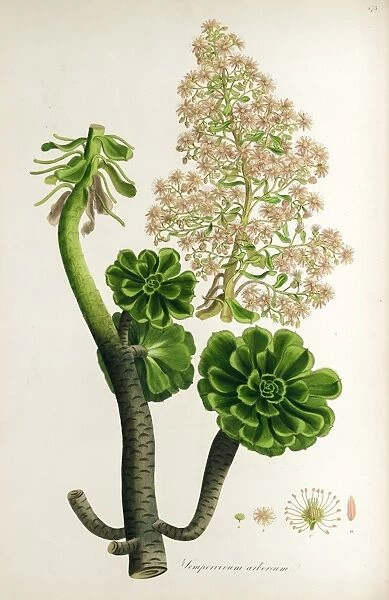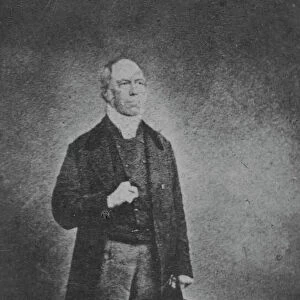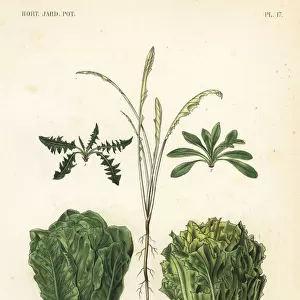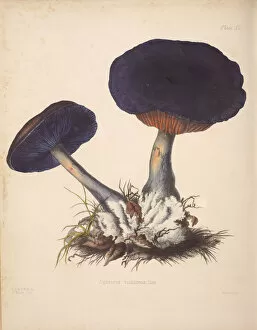Home > Europe > Greece > Related Images
Botanical illustration Sempervivum arboreum
![]()

Wall Art and Photo Gifts from Mary Evans Picture Library
Botanical illustration Sempervivum arboreum
Sempervivum arboreum: plate from John Sibthorps book on the plants of Greece Flora Graeca Sibthorpiana published 1806-40 in 10 volumes. Sibthorp was professor of botany at Oxford and set out to identify the 700 plants described in the ancient worlds primary work on herbal medicine Materia Medica Date: 1845
Mary Evans Picture Library makes available wonderful images created for people to enjoy over the centuries
Media ID 14397534
© Mary Evans Picture Library/Harry Price
1806 1845 Arboreum Flora Graeca Identify Oxford Primary Professor Sempervivum Volumes
EDITORS COMMENTS
This stunning botanical illustration depicts Sempervivum arboreum, also known as the Living Stone or Houseleek, as it was captured in John Sibthorp's seminal work "Flora Graeca Sibthorpiana," published between 1806 and 1840. Sibthorp, a professor of botany at the University of Oxford, embarked on an ambitious project to identify the 700 plants described in the ancient world's primary work on herbal medicine, Materia Medica. The plate, published in volume 5 of the 10-volume set, showcases the intricate details of Sempervivum arboreum's succulent leaves and rosettes, which are adapted to withstand harsh conditions and cling to rocks and walls. The illustration is a testament to the meticulous work of Sibthorp and his team of skilled artists and botanical illustrators, who painstakingly documented each plant's unique features for scientific study and record. Sempervivum arboreum, native to Europe and the Mediterranean, has been used for medicinal purposes since ancient times, with records dating back to Dioscorides and Pliny the Elder. The plant was believed to have healing properties and was used to treat a variety of ailments, including wounds, burns, and digestive issues. This beautiful illustration not only serves as a record of the plant's appearance but also as a window into the past, offering a glimpse into the rich history of botanical exploration and discovery. The intricate details and vibrant colors bring the plant to life, making it a treasured addition to any botanical collection or scientific library.
MADE IN AUSTRALIA
Safe Shipping with 30 Day Money Back Guarantee
FREE PERSONALISATION*
We are proud to offer a range of customisation features including Personalised Captions, Color Filters and Picture Zoom Tools
SECURE PAYMENTS
We happily accept a wide range of payment options so you can pay for the things you need in the way that is most convenient for you
* Options may vary by product and licensing agreement. Zoomed Pictures can be adjusted in the Cart.






